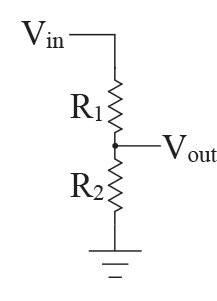Suppose I have a collection of parts with the same nominal value and some tolerance, say 50 Ohm 1% tolerance resistors. What distribution of actual component values can I expect? I can imagine several definitions:
- The parts follow a normal distribution with standard deviation 0.5 Ohms
- 95% of parts will be within 0.5 Ohms of the nominal value
- 100% of parts will be within 0.5 Ohms of the nominal value
- …
What is the actual technical definition of component tolerance?
My reason for asking is that I wish to simulate many instances of a particular circuit, each time selecting 'realistic' component values, to determine what variation in the final circuit performance I can expect, based on the tolerances of the underlying passive components.
 . In general, if you have 2 circuits connected together, the first one's output to the second one's input, you do not want the second one to attenuate the signal that passes through the first one. Therefore, you must make sure that the second circuit's input impedance (represented by R2 in the voltage divider) is larger than your first circuit's output impedance. How much larger? The rule of thumb is 10x larger.
. In general, if you have 2 circuits connected together, the first one's output to the second one's input, you do not want the second one to attenuate the signal that passes through the first one. Therefore, you must make sure that the second circuit's input impedance (represented by R2 in the voltage divider) is larger than your first circuit's output impedance. How much larger? The rule of thumb is 10x larger.
Best Answer
You can make no assumptions about distribution within the specified range. 50 Ω ±1% means exactly that. Since 1% of 50 Ω is 500 mΩ, the manufacturer is saying that any one resistor you get will be from 49.5 Ω to 50.5 Ω. You can't read into it or assume more than that.
Added:
Some people have pointed out that they have gotten tightly clumped values from a batch. I have seen that too. However, that changes nothing.
Depending on the type of part and the manufacturing, testing, and binning processes, you might get a tight distribution within a batch. But the most important word is "might". There is no guarantee, and just because one batch was tight you can't make assumptions about the next batch.
Consider a few different manufacturing scenarios:
In this scenario, the .1% parts probably have a fairly even distribution accross their range. The 1% parts have more of a normal distribution, except that there is a gap within .1% of the ideal value.
When you don't know anything about the manufacturing process, there is nothing you can assume other than each part will be somewhere within the specified range. You have to consider the value of each part as a separate uncorrellated random event. Sometimes there might in fact be some correlation between sequential parts, but since you don't know when that is, you're still back to having to assume there isn't. Even if you measure one batch and find a correlation, the next batch is a separate random event for which the data from the previous batch is unrelated. Again you can't assume anything.
In summary, if you need to know more than the accuracy specified by the manufacturer, you have to measure each part individually.
Each time you flip a coin the result is random and uncorrelated to other times, but you can still get 3 heads in a row often enough to look like a pattern if you don't think about it carefully.